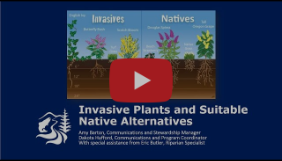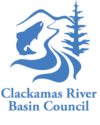Watershed Health Education for Youth and Adults
CRBC is dedicated to engaging citizens in caring for the Clackamas river watershed. Our team engages with the community through various restoration events, school visits, landowners meetings, and other local, regional and watershed-wide activities.

Clackamas360 Watershed Health Education Program
The Clackamas River Basin Council offers our unique Clackamas360 Virtual Watershed Tour to local schools. This custom watershed health education program uses virtual reality Oculus Go headsets in the classroom (or at community events/meetings) to provide an interactive, educational, and memorable experience.
Click the button below to learn more and connect with CRBC about setting up an experience.

Field Trips
The Clackamas River Basin Council’s education team is active in the community and can provide field trip support for teachers and educators. Past field trips have included salmon carcass tossing, macroinvertebrate sampling, tree and shrub planting, noxious weed removal, trash cleanups, and on-water experiences and project tours. See the vide below to watch a salmon carcass toss.
To learn more: Please contact CRBC’s Amy Barton at 503-303-4372 or amy@clackamasriver.org.

Workshops, Webinars and Public Education
Clackamas River Basin Council offers free workshops and webinars throughout the year. Our workshops are recorded so anyone can access the content at any time.

Clackamas County Water Education Team
Clackamas River Basin Council is a member of the Clackamas County Water Education Team (CCWET), a consortium of educators who are dedicated to promoting hands-on exploration of our local watershed. As such, we provide in-school presentations, resources for teachers, and field trip opportunities.
Watch a Salmon Carcass Toss
Possibly our stinkiest activity, salmon carcass tossing performs a vital function in the Clackamas Watershed. Historically, salmon would have made it upstream on their own steam. After using their noses to guide them to their home streams from the Pacific Ocean, they’d lay their eggs and perish shortly after. The nutrients from their bodies would make their way into the water column, nourishing nearby plant life and aquatic creatures. Currently, a number of barriers make it impossible for salmon to return to the upper reaches of the watershed, leaving these portions of the Clackamas nutrient-deprived.
CRBC has worked with partners including SOLVE, Clackamas High School, ODFW, the U.S. Forest Service, and the Oregon Watershed Enhancement Board to place several tons of donated salmon carcasses in Clackamas streams.
The video below shows Clackamas High School Students at Bonnie Lure State Recreation Area tossing salmon into Eagle Creek. Thank you to U.S. Fish and Wildlife Service National Eagle Creek Hatchery, State Parks, the Lower Columbia Estuary Partnership, and Water Environment Services for your partnership on this project.
View this post on Instagram
